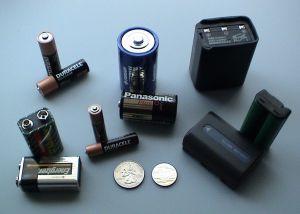New and High-quality batteries for laptop notebook, We specialize in laptop batteries for Sony, Toshiba, Dell, Acer, Compaq, HP, Apple, other Models. |
||
| Free Ship, 1-Year Warranty! | HOME VIEW CART PAYMENT SHIPPING WHOLESALE CONTACT US |
|
|
|
| Home > Laptop Battery > Battery Guide |
 The differences among Li-Polymer battery and other rechargeable batteries Ni-Cd battery: Ni-Cd battery has charge memory effect, if charge it when it’s not fully discharged, the capacity will decrease. In addition, Cadmium is a harmful heavy metal substances. Ni-Cd battery is a low-grade battery. Ni-MH battery: Ni-MH battery is a high capacity battery, it has no charge memory effect, and has higher capacity than Ni-Cd battery when has the same number of cellsNi-MH battery is a mid-grade battery. Li-ion battery: Li-ion battery also known as lithium-ion battery. Li-ion battery has higher capacity and lighter weight than Ni-Cd and Ni-MH battery, has the longest life, the shortest charging time, and has no memory effect. But need to use the special charger, the general charger reduces the charging performance and battery life. Li-ion battery is a high-grade battery. Li-Polymer battery: Li-Polymer battery also known as the polymer lithium-ion battery. Polymer lithium-ion battery and Li-ion battery use the same the anode, cathode materials and liquid , and has the same principle. The difference is the electrolytes, Li-ion battery uses liquid electrolyte, while Li-Polymer uses the solid polymer electrolyte, which has the features of safe, high cohesive energy and long life. Li-Polymer battery is a high-grade battery. Comparison Sheet:
Laptop Battery Type Comparison and Features’ Analysis Laptop battery types and features: Nickel-cadmium batteries (Ni-Cd): It is the initial battery that laptop has used, but because it has a serious memory effect, and nickel (Ni) the anode material uses is toxic and cause pollution on environment, so it is quickly was despised by laptop, and replaced by a more superior nickel-metal hydride battery. Nickel-metal hydride battery (Ni-MH): Ni-NH battery has the same structural principle with the Ni-Cd battery, it just replace the cathode with the non-toxic nickel – metal hydride materials which is more environmental and has better performance. Although it’s only a small change, but it has brought a dramatic increase in performance. It also has a advantage the nickel-cadmium battery cann’t reach, that is the memory effect is not obvious, so that we don’t need to worry about the memory effect any more and use it more convinently. Although the performance of nickel-metal hydride batteries are very good, but with technological advances, it was replaced by the lighter in weight and a higher energy density lithium battery, and it became the history of laptop battery. Li-ion battery: Many people think that lithium battery means that we are now commonly used in lithium-polymer battery, in fact, lithium battery includes both lithium metal-ion battery (Li-MO2) and lithium-polymer battery (Li-ion). Because Li-MO2 battery caught fire while explosion occurred in 1989 when it entered the market, it soon disappeared from people’s sight, and replaced by a safer lithium-polymer battery, which is light in weight, With the same capacity, its weight is only about 1/2 of Ni-NH battery, so it fast became the new darling of mobile portable devices, and have been used by most notebooks. Now it is the backbone of notebook batteries. Fuel Cell (Fuel Cell): Fuel cell are the star of future laptop battery, it has many types, including proton exchange membrane fuel cell (PEM), alkaline fuel cell (AFC) and solid oxide fuel cell (SOFC) and many other types. However, due to the start-up time and operating temperature of Fuel Cell and other reasons, in fact, the suitable Fuel Cell for laptops is only the proton exchange membrane fuel cell (PEM). PEM fuel cell uses methanol fuel, from the positive and negative electrodes composed of the principle of its power generation is the result of the methanol, after re-enter the negative hydrogen and oxygen enter the cathode, through the catalyst, hydrogen atoms into protons and electrons, by different paths into the cathode, e-cycle to produce electricity through an internal, proton through the electrolyte to achieve positive, combined with oxygen to produce water and electrical and heat. The experts agree that the biggest factor restricts the commercial application of fuel cell, is the fuel cell using the metal platinum (Pt) or platinum as catalyst to make the cost of production high, the current production cost of Fuel Cell is 500 ~ 1000 USD / kW. Research shows that only when the Fuel Cell production cost fall to 50 U.S. dollars / kilowatt level, it can be truly accepted by consumers. The high cost of fuel cells is mainly due to mass production has not been formed, once enter mass production stage, the price of fuel cells will certainly be greatly reduced. Notebook Temperate Zone: Your New Notebook Standard Maintenance Long-Term Storage Optimal Setting
Battery Description Main performance parameters of the battery includes electromotive force, capacity, specific energy and resistance. Electromotive force is equal to units of positive charge from negative to move through the cathode inside the battery when the battery of non-electrostatic (chemical force) done by power. Electromotive force depends on the chemical properties of electrode materials, has no relationship with battery size. The total output of the battery is the capacity of it, and ampere-hours is its unit. In the battery reaction, 1 kg-reactive substances produced by the battery power is called the theory of specific energy. Cells were actually higher than the energy smaller than the theoretical specific energy. Because the batteries are not all reactants reaction according to the battery while the battery internal resistance caused by electromotive force must fall, so often the battery than the energy, high-called high-energy batteries. The larger the size of the battery, the smaller the resistance. Battery energy storage is limited, the battery can charge the total amount of output is called its capacity, usually treated as unit in ampere-hours, it is also one of the battery performance parameters. The capacity of the battery related to the number and electrode material, namely the size of the electrode. Practical chemical batteries can be divided into two basic types: galvanic cell and batteries. After made, the galvanic cell can generate current, but it cann’t be recharged, will be abandoned once the discharge is completed. Battery also known as secondary batteries before use should be charged, charge to use after discharge, discharge can also be charged after the re-use. Battery charging, the energy converted into chemical energy; discharge, chemical energy into electricity. First, make sure you done below things:
After that, just follow below laptop battery lift extension tips and you’ll get a old battery with fresh body 1. Defrag regularly – The faster your hard drive does its work – less demand you are going to put on the hard drive and your battery. Make your hard drive as efficient as possible by defragging it regularly. (but not while it’s on battery of course!) Mac OSX is better built to handle fragmentation so it may not be very applicable for Apple systems. 2. Add more RAM – This will allow you to process more with the memory your laptop has, rather than relying on virtual memory. Virtual memory results in hard drive use, and is much less power efficient. Note that adding more RAM will consume more energy, so this is most applicable if you do need to run memory intensive programs which actually require heavy usage of virtual memory. 3. Keep the battery contacts clean: Clean your battery’s metal contacts every couple of months with a cloth moistened with rubbing alcohol. This keeps the transfer of power from your battery more efficient. 4. Take care of your battery – Exercise the Battery. Do not leave a charged battery dormant for long periods of time. Once charged, you should at least use the battery at least once every two to three weeks. Also, do not let a Li-On battery completely discharge. (Discharing is only for older batteries with memory effects) 5. Hibernate not standby – Although placing a laptop in standby mode saves some power and you can instantly resume where you left off, it doesn’t save anywhere as much power as the hibernate function does. Hibernating a PC will actually save your PC’s state as it is, and completely shut itself down. 6. Keep operating temperature down – Your laptop operates more efficiently when it’s cooler. Clean out your air vents with a cloth or keyboard cleaner. 7. Don’t multitask – Do one thing at a time when you’re on battery. Rather than working on a spreadsheet, letting your email client run in the background and listening to your latest set of MP3’s, set your mind to one thing only. If you don’t you’ll only drain out your batteries before anything gets completed! 8. Go easy on the PC demands – The more you demand from your PC. Passive activities like email and word processing consume much less power than gaming or playing a DVD. If you’ve got a single battery charge – pick your priorities wisely.9. Get yourself a more efficient laptop – Laptops are getting more and more efficient in nature to the point where some manufacturers are talking about all day long batteries. Picking up a newer more efficient laptop to replace an aging one is usually a quick fix. 9. Set up and optimize your power options – Go to ‘Power Options’ in your windows control panel and set it up so that power usage is optimized (Select the ‘max battery’ for maximum effect). 15. Prevent the Memory Effect – If you’re using a very old laptop, you’ll want to prevent the ‘memory effect’ – Keep the battery healthy by fully charging and then fully discharging it at least once every two to three weeks. Exceptions to the rule are Li-Ion batteries (which most laptops have) which do not suffer from the memory effect. 10: Turn off the autosave function. MS-Word’s and Excel’s autosave functions are great but because they keep saving regular intervals, they work your hard driver harder than it may have to. If you plan to do this, you may want to turn it back on as the battery runs low. While it saves battery life in the beginning, you will want to make sure your work is saved when your battery dies. 11: Lower the graphics use. You can do this by changing the screen resolution and shutting off fancy graphic drivers. Graphics cards (video cards) use as much or more power today as hard disks. Ok, at last, make your laptop batttey have a rest once it hits your finger. |
Promotion!
Acer Laptop Battery Apple Laptop Battery Asus Laptop Battery Compaq Laptop Battery Dell Laptop Battery HP Laptop Battery IBM Laptop Battery Lenovo Laptop Battery Sony Laptop Battery Toshiba Laptop Battery
|
Copyright © |

